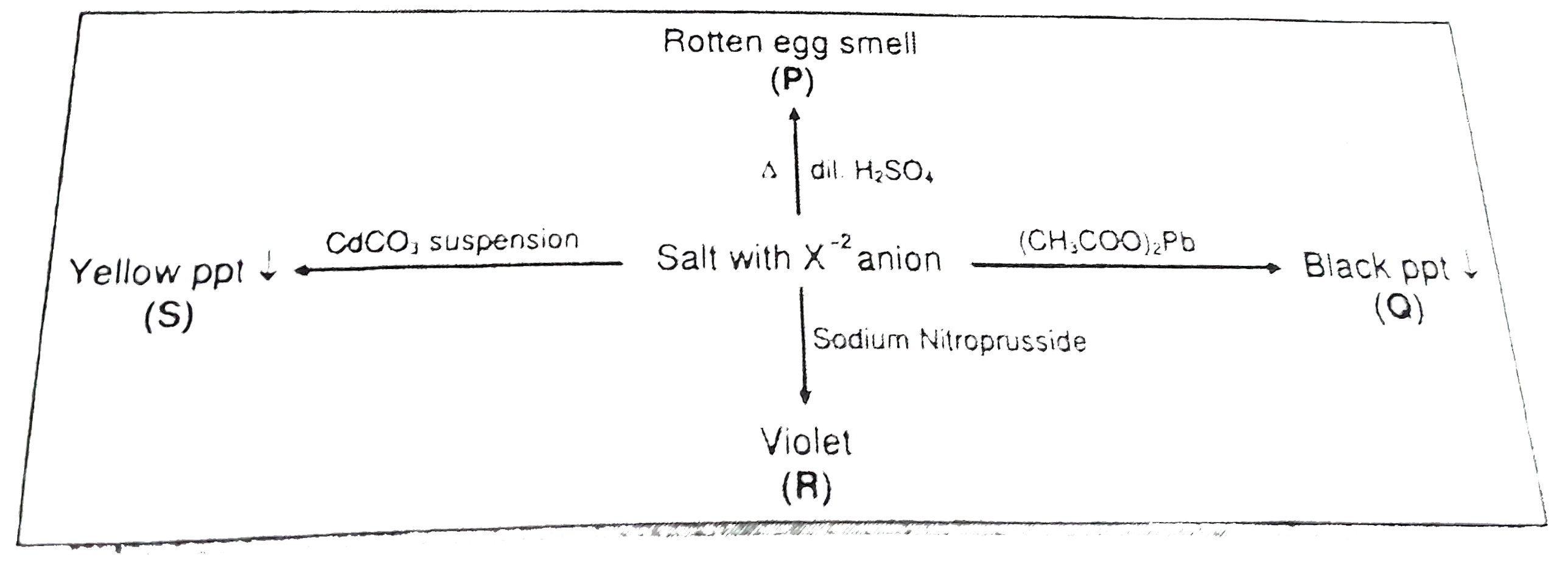The anion O2− is iso-electronic with
F+
N2−
F−
N3+
The correct Answer is:C
To determine which species is iso-electronic with the anion O2−, we need to follow these steps:
Step 1: Determine the number of electrons in O2−
- The atomic number of oxygen (O) is 8, which means it has 8 protons and 8 electrons in its neutral state.
- Since O2− has gained 2 additional electrons, we calculate the total number of electrons:
Total electrons in O2−=8+2=10
Step 2: Identify species that have 10 electrons
Now we need to find other species that also have 10 electrons. We will evaluate the given options.
Step 3: Evaluate each option
1. Option: F+
- The atomic number of fluorine (F) is 9. In F+, it has lost 1 electron:
Total electrons in F+=9−1=8
- Not iso-electronic with O2−.
2. Option: N2−
- The atomic number of nitrogen (N) is 7. In N2−, it has gained 2 electrons:
Total electrons in N2−=7+2=9
- Not iso-electronic with O2−.
3. Option: F−
- The atomic number of fluorine (F) is 9. In F−, it has gained 1 electron:
Total electrons in F−=9+1=10
- This is iso-electronic with O2−.
4. Option: N3+
- The atomic number of nitrogen (N) is 7. In N3+, it has lost 3 electrons:
Total electrons in N3+=7−3=4
- Not iso-electronic with O2−.
Step 4: Conclusion
The only species that is iso-electronic with O2− is F−, as both have 10 electrons.
Final Answer:
The anion O2− is iso-electronic with F−.
---
- The atomic number of oxygen (O) is 8, which means it has 8 protons and 8 electrons in its neutral state.
- Since O2− has gained 2 additional electrons, we calculate the total number of electrons:
Total electrons in O2−=8+2=10
Now we need to find other species that also have 10 electrons. We will evaluate the given options.
1. Option: F+
- The atomic number of fluorine (F) is 9. In F+, it has lost 1 electron:
Total electrons in F+=9−1=8
- Not iso-electronic with O2−.
- The atomic number of nitrogen (N) is 7. In N2−, it has gained 2 electrons:
Total electrons in N2−=7+2=9
- Not iso-electronic with O2−.
- The atomic number of fluorine (F) is 9. In F−, it has gained 1 electron:
Total electrons in F−=9+1=10
- This is iso-electronic with O2−.
- The atomic number of nitrogen (N) is 7. In N3+, it has lost 3 electrons:
Total electrons in N3+=7−3=4
- Not iso-electronic with O2−.
The only species that is iso-electronic with O2− is F−, as both have 10 electrons.
The anion O2− is iso-electronic with F−.
Similar Questions
Knowledge Check
At iso-electric point:
Aconc. of cation is equal to conc of anionBNet charge is zero.CMaximum conc. of di-polar ion (Zwitter ion) will be presentDAll of the aboveWhich of the following are iso-electronic as well as iso-structural ?
NO−3,CO2−3,ClO−3,SO3AAll have linear shape.BAll have trigonal planar shape.CAll have tetrahedral shape.DAll have trigonal pyramidal shape.
Which of the following is iso-electronic with neon-
View SolutionCO2 is iso-structural with :
View SolutionWhich of the following pair is iso-electronic : -
View SolutionXeF2 is iso-structural with :
View SolutionWhich among the following is not iso-electronic ?
View SolutionThe size of the iso-electronic species Cl−,Ar and Ca2+ is affected by:
View Solution

